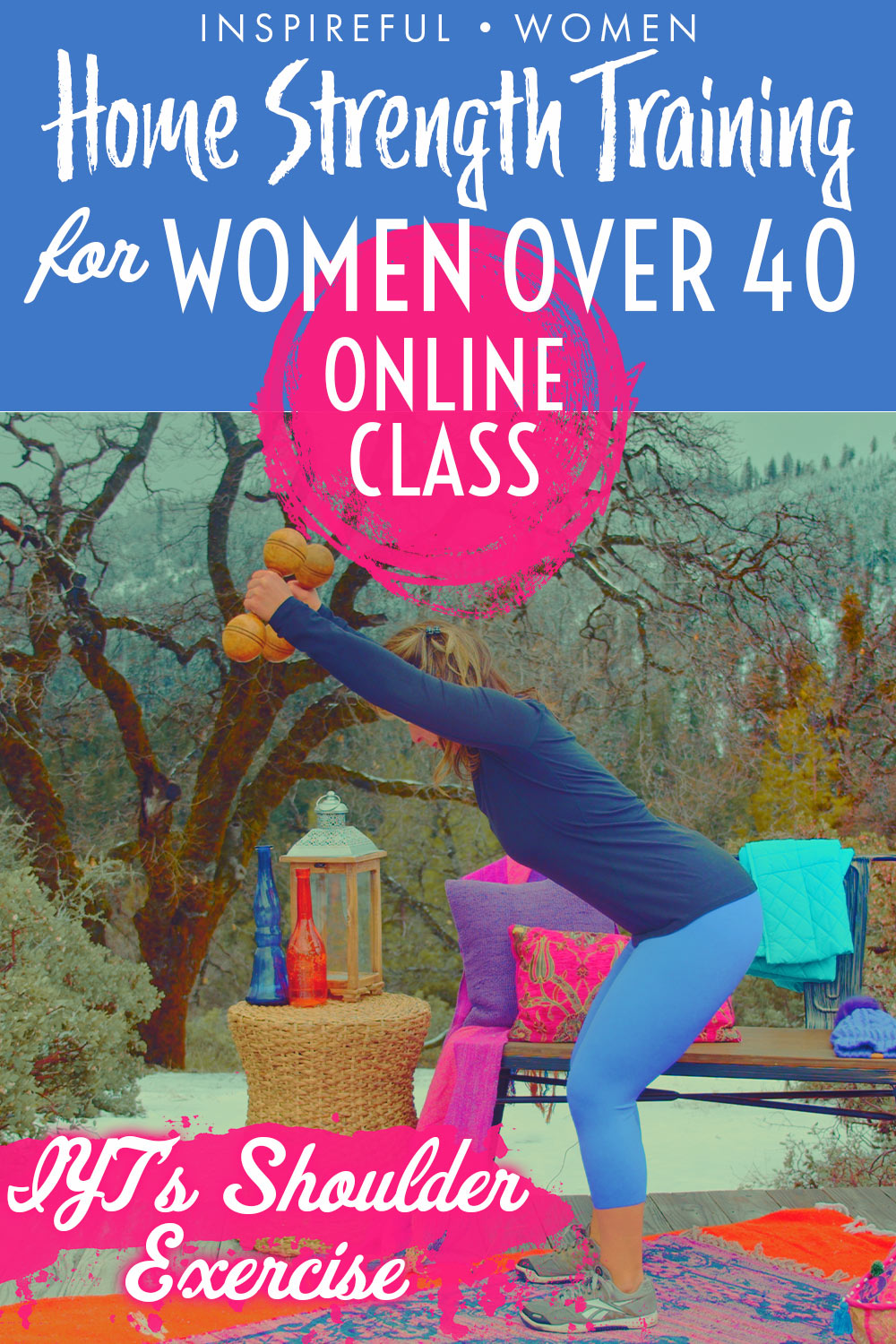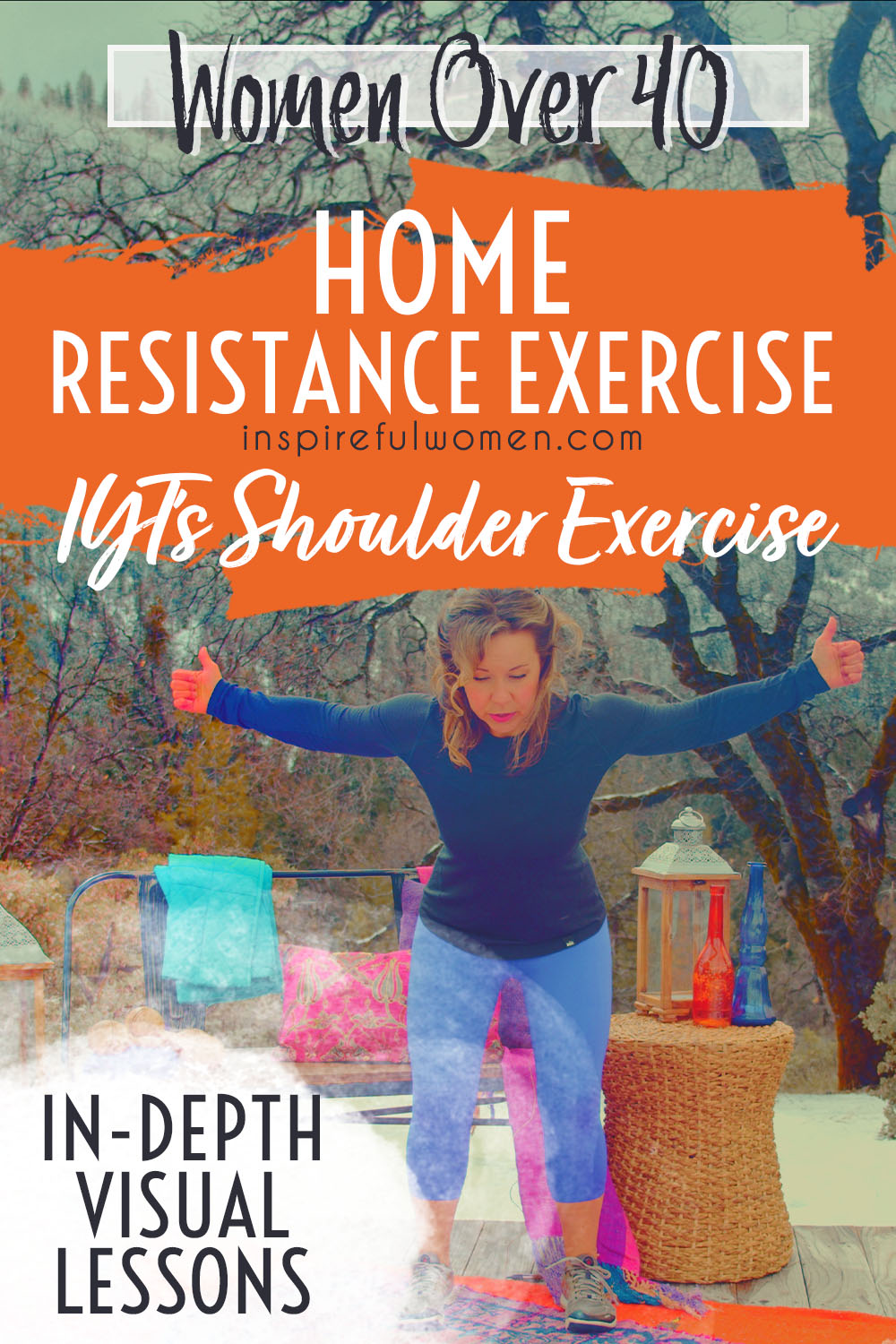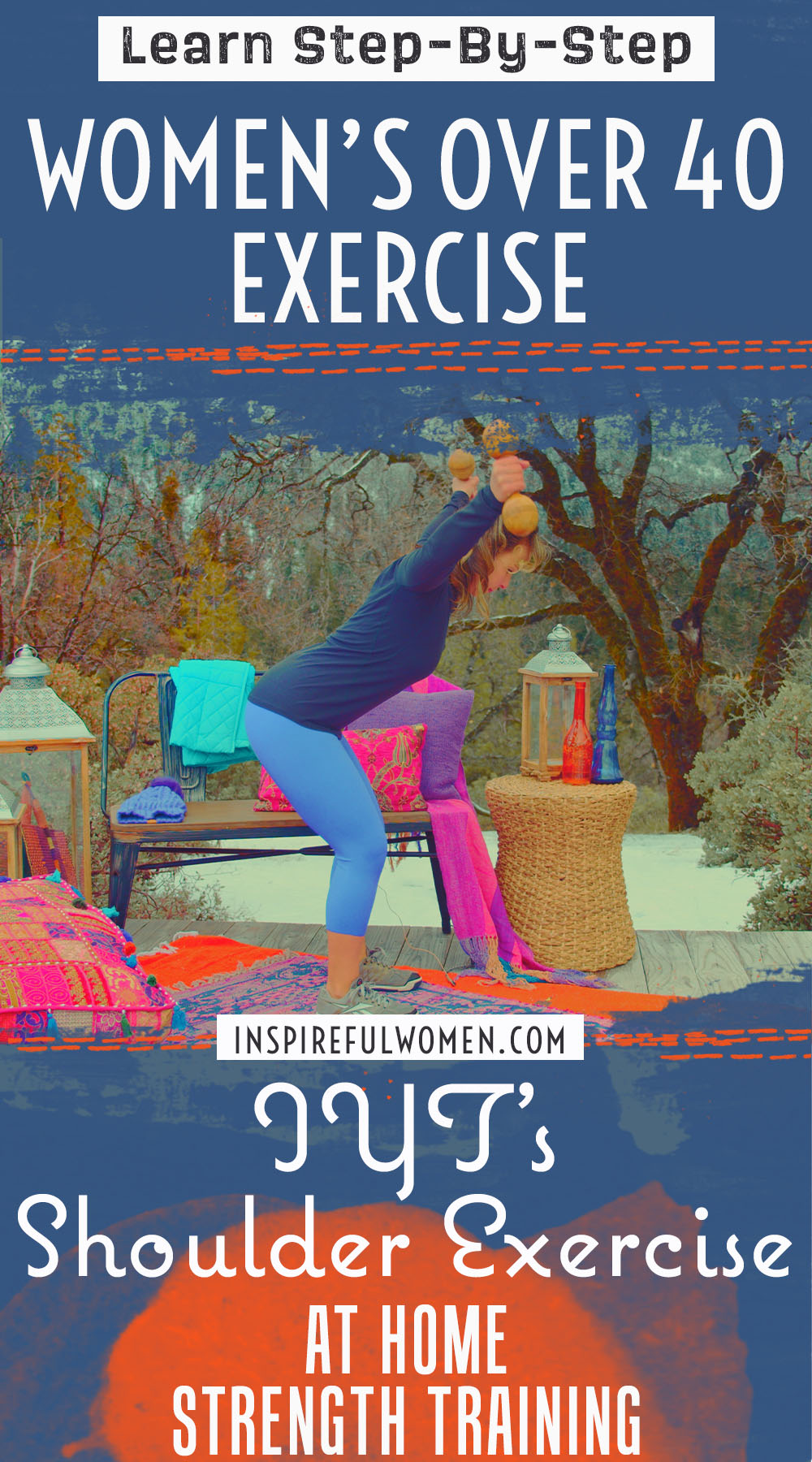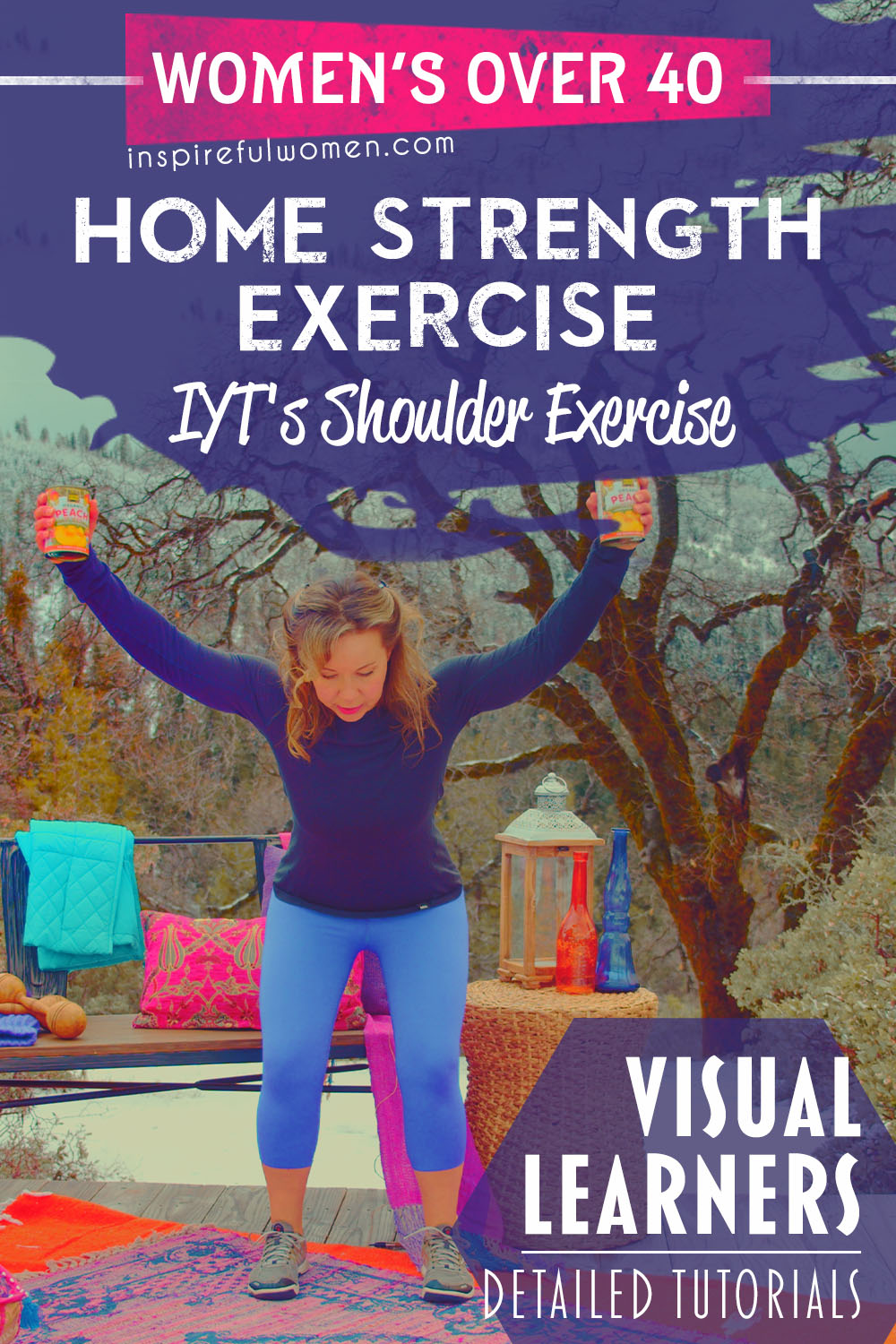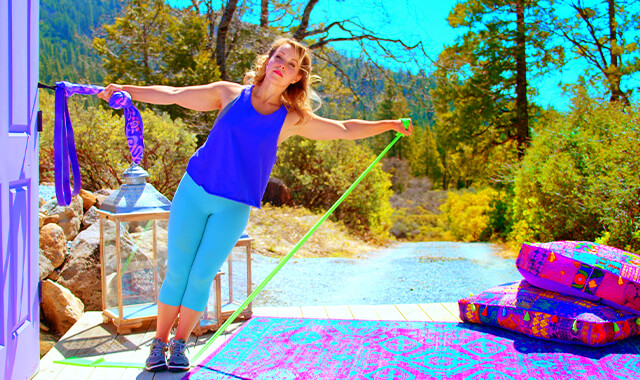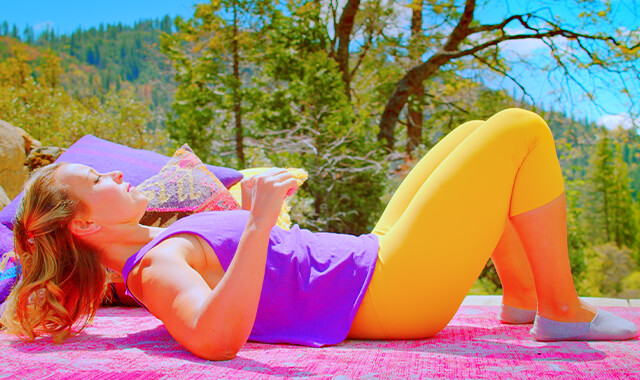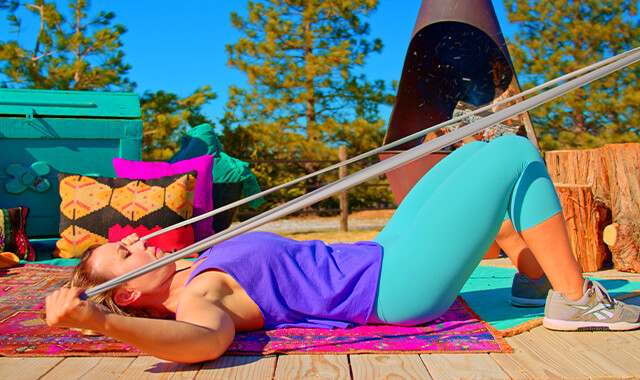IYT’s Rotator Cuff Shoulder Exercise
How to Do IYT’s Rotator Cuff Shoulder Activation Exercise | In-Depth Guide [VISUAL LEARNERS] Beginner
Proper Form, Common Mistakes, & Variations | Home Resistance Training
WHAT DO YOU WANT TO SEE?
QUICK DEMO
QUICK DEMO
MUSCLES THIS WORKS
MUSCLES
MAIN MUSCLES WORKED IN IYT’s Rotator Cuff Shoulder Exercise
Rotator Cuff, rhomboids, mid and lower trapezius, lats
This exercises all 4 Rotator Cuff Muscles of the shoulder: the supraspinatus, infraspinatus, teres minor, and subscapularis
WHAT WE'RE DOING TODAY
WHAT & WHY
BENEFITS OF TRAINING THE shoulder muscle
WHAT
WHAT WE'RE DOING TODAY
Other names for this exercise: TYIs
ALL WE'RE DOING:
We'll be raising our arms out to our sides, then up in a v shape, then directly overhead - 3 ways to move our shoulder & shoulder blade.
TYIs are a series of three-arm movements. This easy rotator cuff exercise can be used to warm up and strengthen the muscles that move and stabilize the shoulder blade during movements of the arms. The IYTs rotator cuff shoulder exercise also promotes proper posture, enhances shoulder mobility, and helps prevent shoulder impingement.
The exercise starts in a forward hinge position. The position will activate the muscles of the upper and lower back while providing a nice stretch to the hamstrings.
The movement is done by taking your arms straight out to the sides to form a T. Then the arms are lowered down and then lifted up at an angle to form a Y, next the arms are moved overhead to form an I.
WHY BOTHER DOING IT?
WHY
WHY DO WE EVEN CARE?
HEADING 4
This movement lengthens all three portions of the pectoralis major muscle and works the scapular muscles making it great for preparing for upper body resistance training. The exercise is also really good for posture.
TYIs will warm up most of the muscles used for shoulder resistance training. It also moves the shoulder blades through a nice range of movement, so good for prior to overhead lifting.
This movement mobilizes the shoulder joint and the shoulder blade. The rotator cuff, scapular muscles (trapezius, serratus anterior, rhomboids, levator, pectoralis major,) and shoulder muscles will be activated. The muscles and fascia of the chest and arms will be elongated.
Holding the hinge position will activate the core muscles and also to some degree, the muscles of the legs.
EVERYDAY LIFE
EVERYDAY LIFE &
MUSCLE FUNCTION
HOW WE USE OUR shoulder MUSCLES IN EVERYDAY LIFE
The muscles of the upper back work in coordination to hold our spines upright and stable during:
1. ALL UPRIGHT ACTIVITIES
- Walking
- Standing
- Unsupported sitting
2. STABILIZES SHOULDER BLADE AND SHOULDER JOINTS DURING THE USE OF ARMS
- Washing windows
- Pulling
- Changing light bulbs
- Lifting
STARTING POINTERS
Starting Pointers
Resist the urge to use too much weight. You want to feel this in your upper back between your shoulder blades and in the shoulder joints. With too much weight you will feel your larger muscles working - mostly the triceps on the back of your arms. Start with no weight or just a pound or two. Keep your neck in neutral - looking down at the floor, and keep space between your earlobes and your shoulders. If you have difficulty keeping your spine in neutral, just bend your knees more.
HOW TO DO THE EXERCISE
LOOKS
HOW IYT’s Rotator Cuff Shoulder Exercise SHAPE OUR BODY
Confident upright posture, graceful and controlled movement.
PROPER FORM
PROPER FORM: IYT’s Rotator Cuff Shoulder Exercise
EQUIPMENT, SETS & REPS
EQUIPMENT
2 small dumbbells
SUGGESTED STARTING WEIGHT FOR WOMEN:
None
SETS & REPS:
2 sets of 8 reps (one rep = T + Y+ I)
PACE:
Smooth and controlled, continuous movement.
BODY POSITION
BODY POSITION FOR IYT’s Rotator Cuff Shoulder Exercise
FEET: Stand with your feet about shoulder-width apart.
BODY STANCE: Neutral spine, including your neck. To begin, your shoulder blades should be positioned down and back - but allow your shoulder blades to move with your arm movement (should not be held tightly in this position). Bend your knees into a mini squat position and maintain a neutral spine, hinge forward at your hips so that you are leaning a little more than halfway between upright and parallel with the floor. You may need to readjust after hinging to lift your sternum.
ARMS: Let your arms hang down towards the floor. Rotate your upper arm so that your thumbs point out to the sides.
HOW TO DO
HOW TO DO IYT’s Rotator Cuff Shoulder Exercise
CUE: Concentrate on feeling the muscles of your upper back and the position/movement of your shoulder blades - more than the movement of your arms. Your thumbs should always point up toward the sky as you lift - so they lead the way.
Begin with the T, lift your arms straight out to the side to make the shape of a T.
Bring your arms back to the starting position and then lift them up again, this time out in an upward diagonal (about halfway between straight out to the sides and straight overhead) - to make the shape of a Y, point your thumbs towards the sky when you lift up.
Bring your arms back to the starting position and then lift them up overhead to form an I.
Bring down to the starting position and repeat.
HOW TO SAFELY GET OUT OF THE EXERCISE
Reverse the hip hinge to return to upright standing.
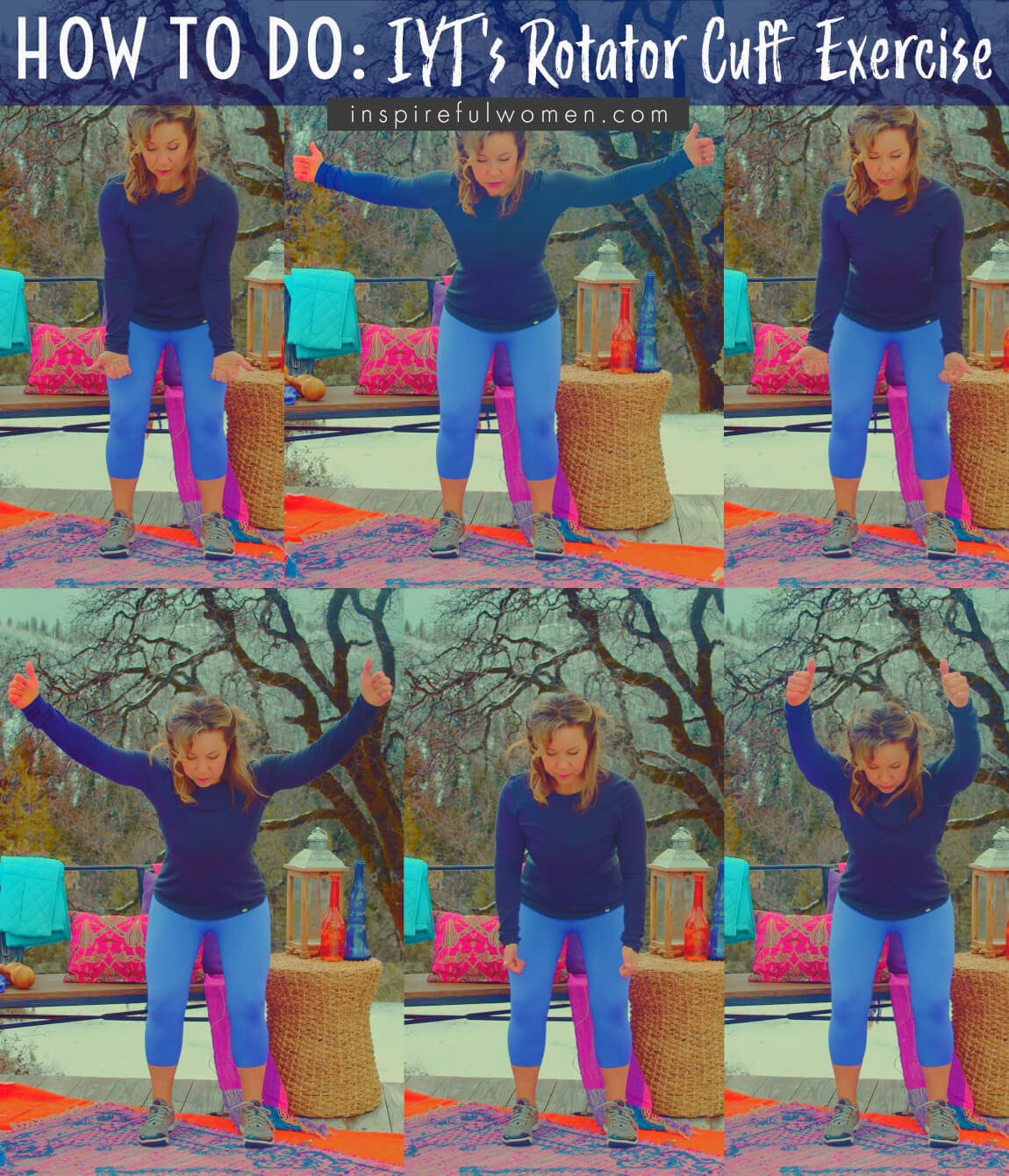

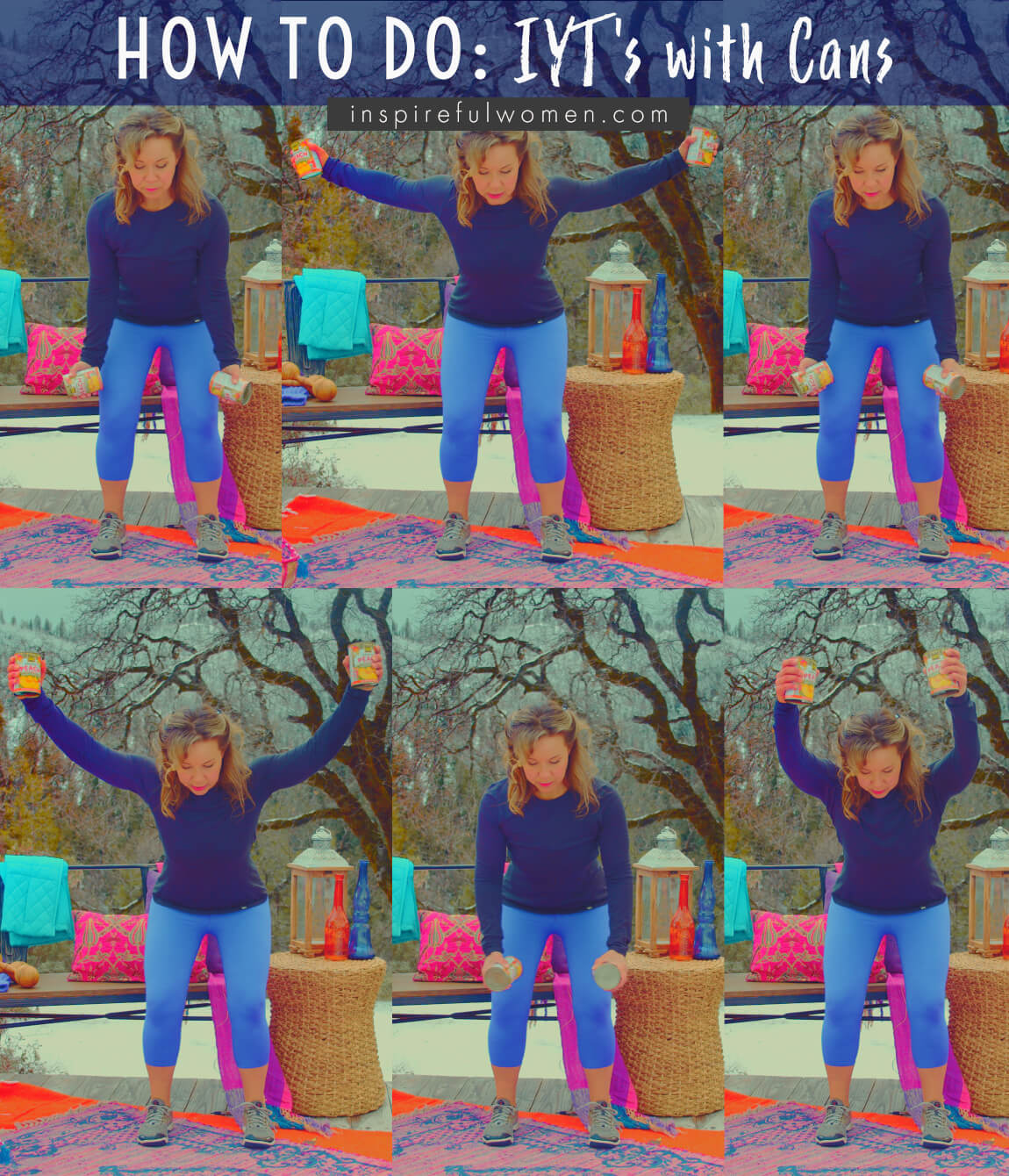
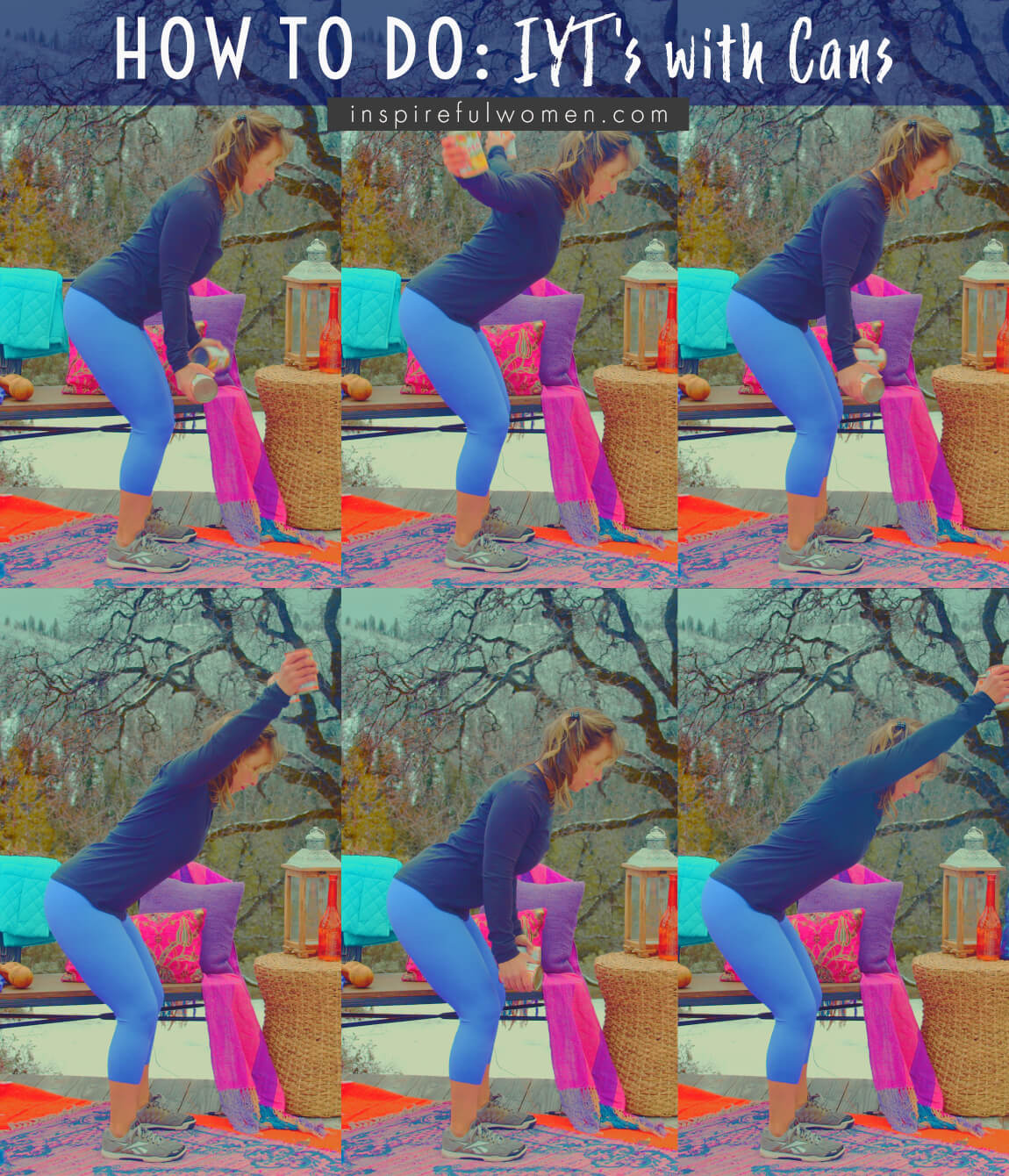
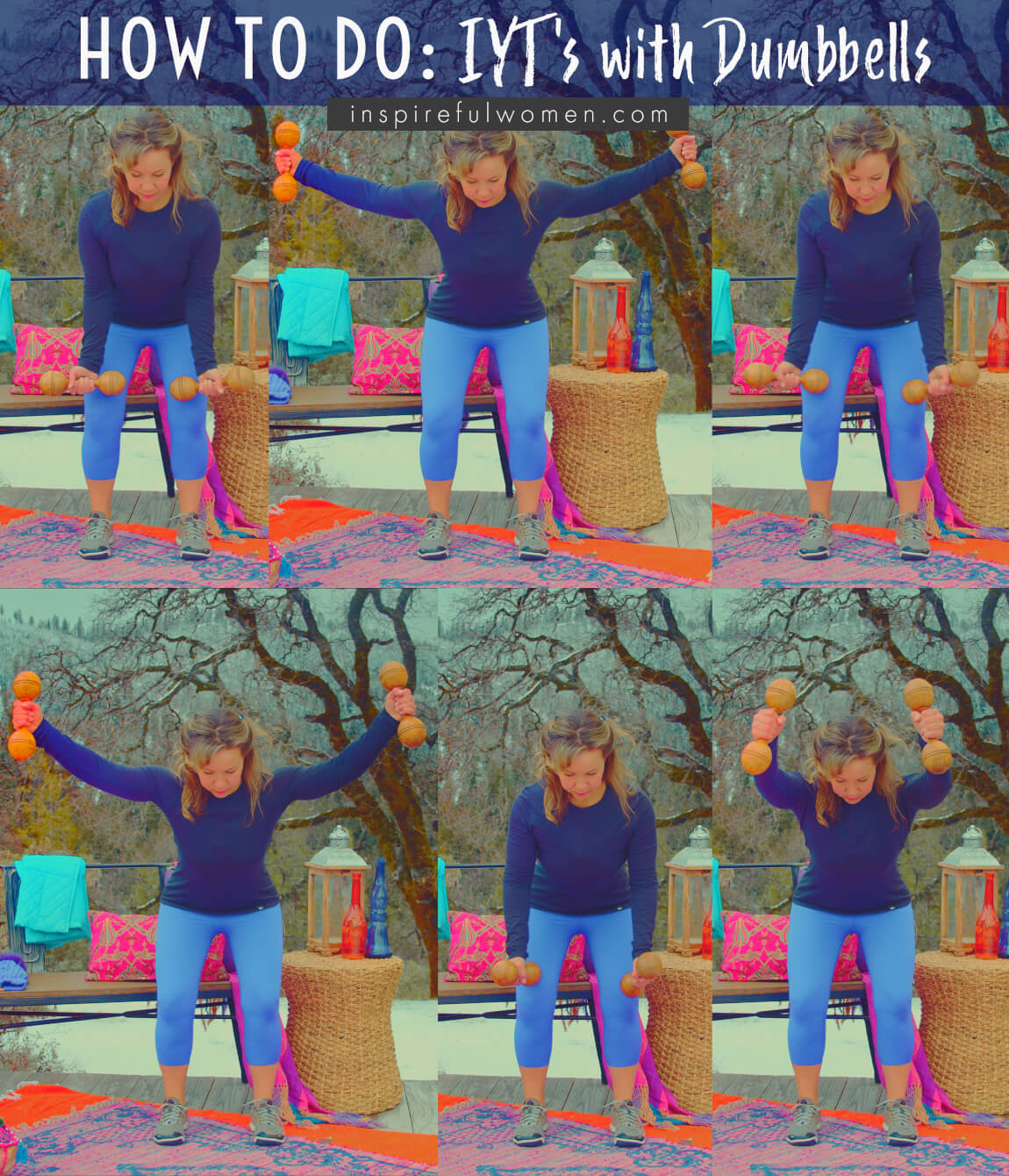
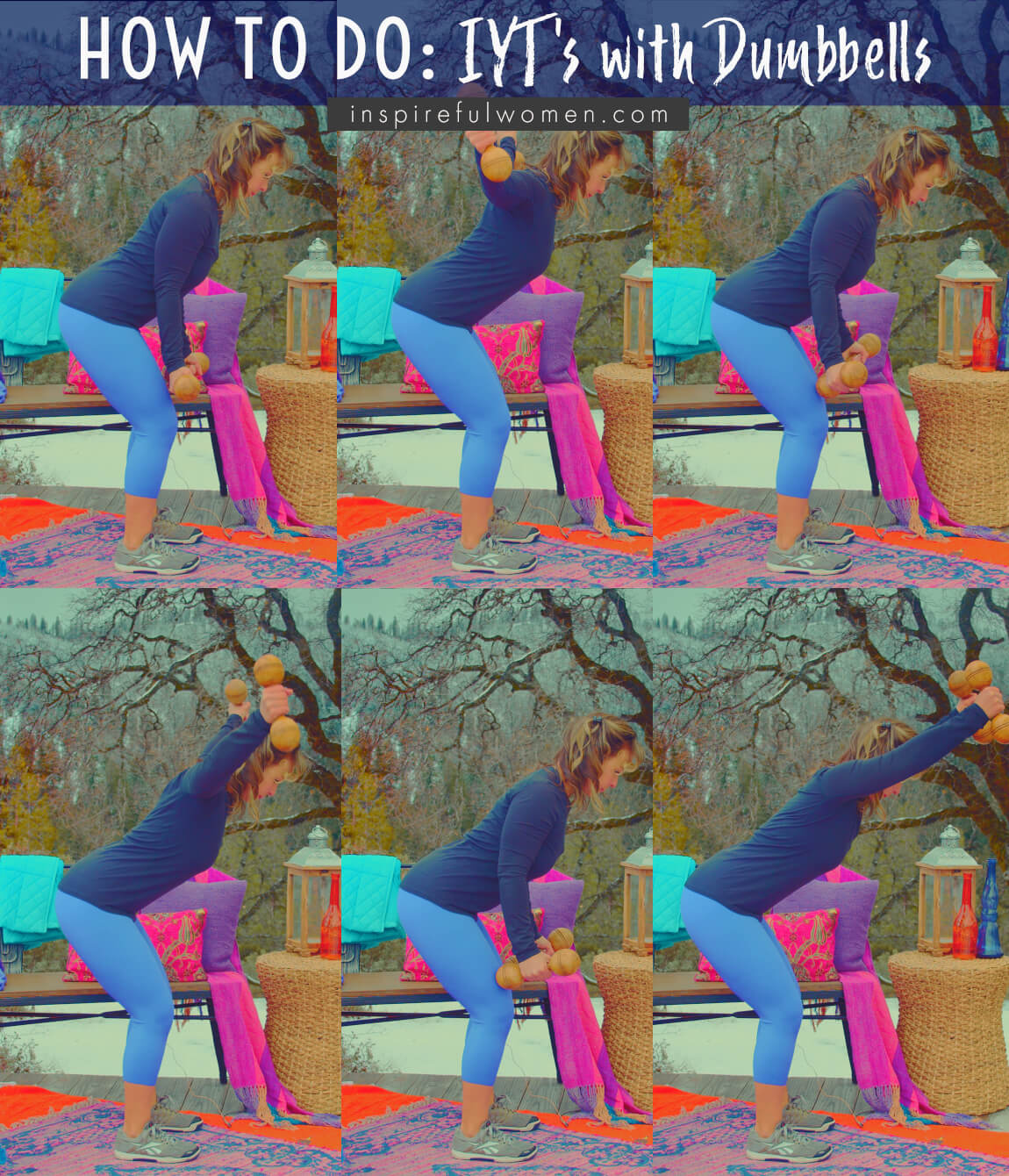
COMMON MISTAKES
COMMON MISTAKES
WHAT TO AVOID WITH IYT’s Rotator Cuff Shoulder Exercise
KEY TIP:
Guess what? Good news! Many avoids are the same for most movements. Once you learn the basics, there's really only a few extra avoids for each individual movement.
1. Avoid shifting your weight over the ball of your feet/toes
AVOID: Avoid rolling forward, shifting your weight over the ball of your feet/toes.
WHY NOT?
- This will make work your leg muscles more, and distract your focus away from your upper back muscles.
WHAT TO DO:
- Keep your weight evenly distributed across all 4 corners of your feet - both sides of your heels, and each side (pinky and big toes sides) of the ball of your feet.
- It can be helpful to bend your knees more.

2. Avoid arching/flexing neck
AVOID: Avoid lifting the neck.
WHY NOT?
- Repetitive lifting or holding the neck in an extended position (chin tilted up) can irritate the small neck joints, and strain the muscles.
- You may feel pressure or discomfort in your neck if you are lifting back.
WHAT TO DO:
- Keep the neck in line with the rest of the spine - you will be facing the floor.
- Think of lengthening the neck, as if someone were gently pulling your head away from the rest of the body.
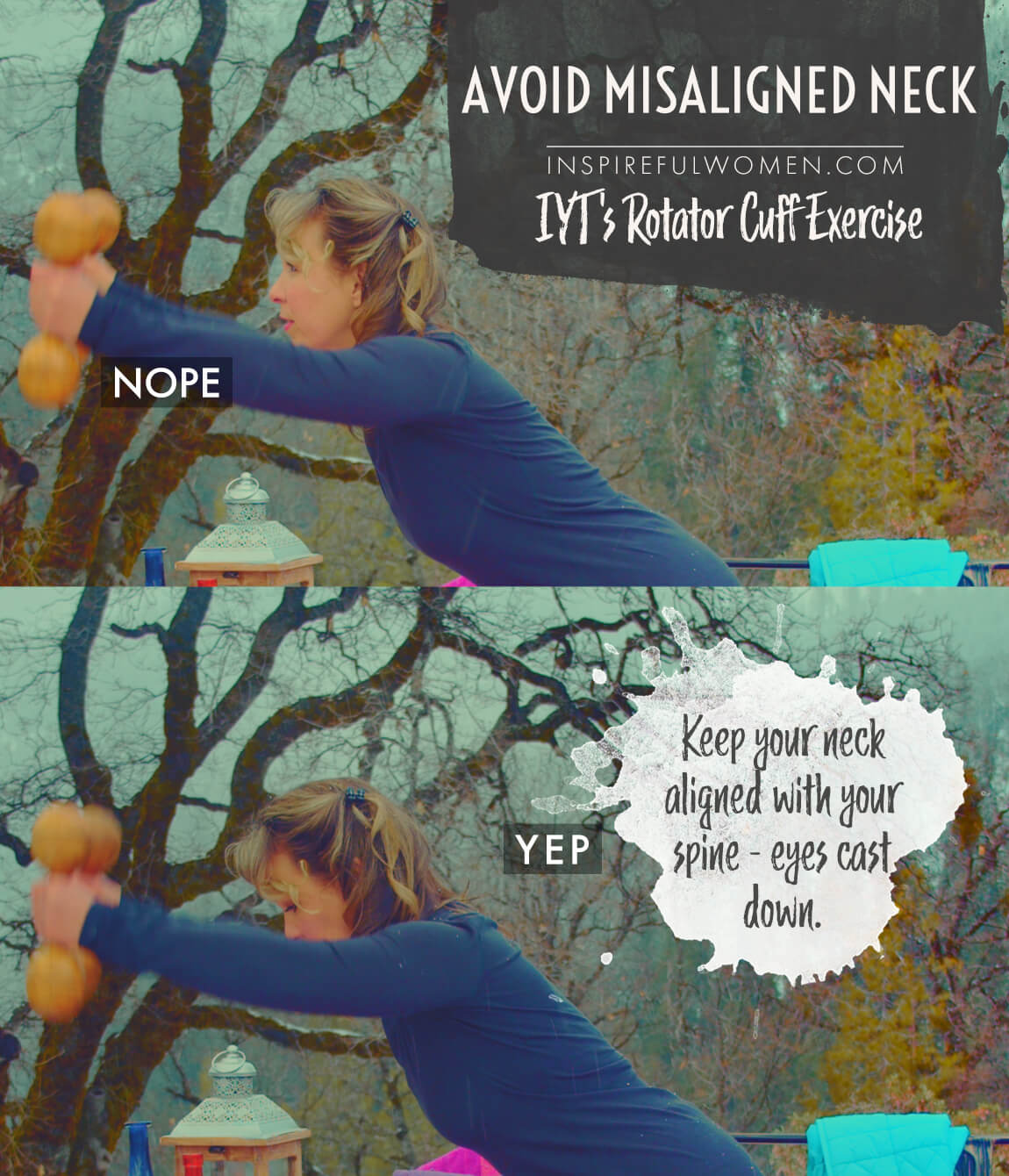
3. Avoid arching/rounding spine
AVOID: Avoid arching or rounding your spine.
WHY NOT?
- Rounding or arching your lumbar (low back) spine can irritate the discs, joints, and nerves of the spine, and can strain the muscles.
- This can be either immediate or it can cause undetected damage that will accumulate over time.
- If you are arching your back you may feel discomfort or pressure in your low back.
WHAT TO DO:
- It can be helpful to bend your knees more.
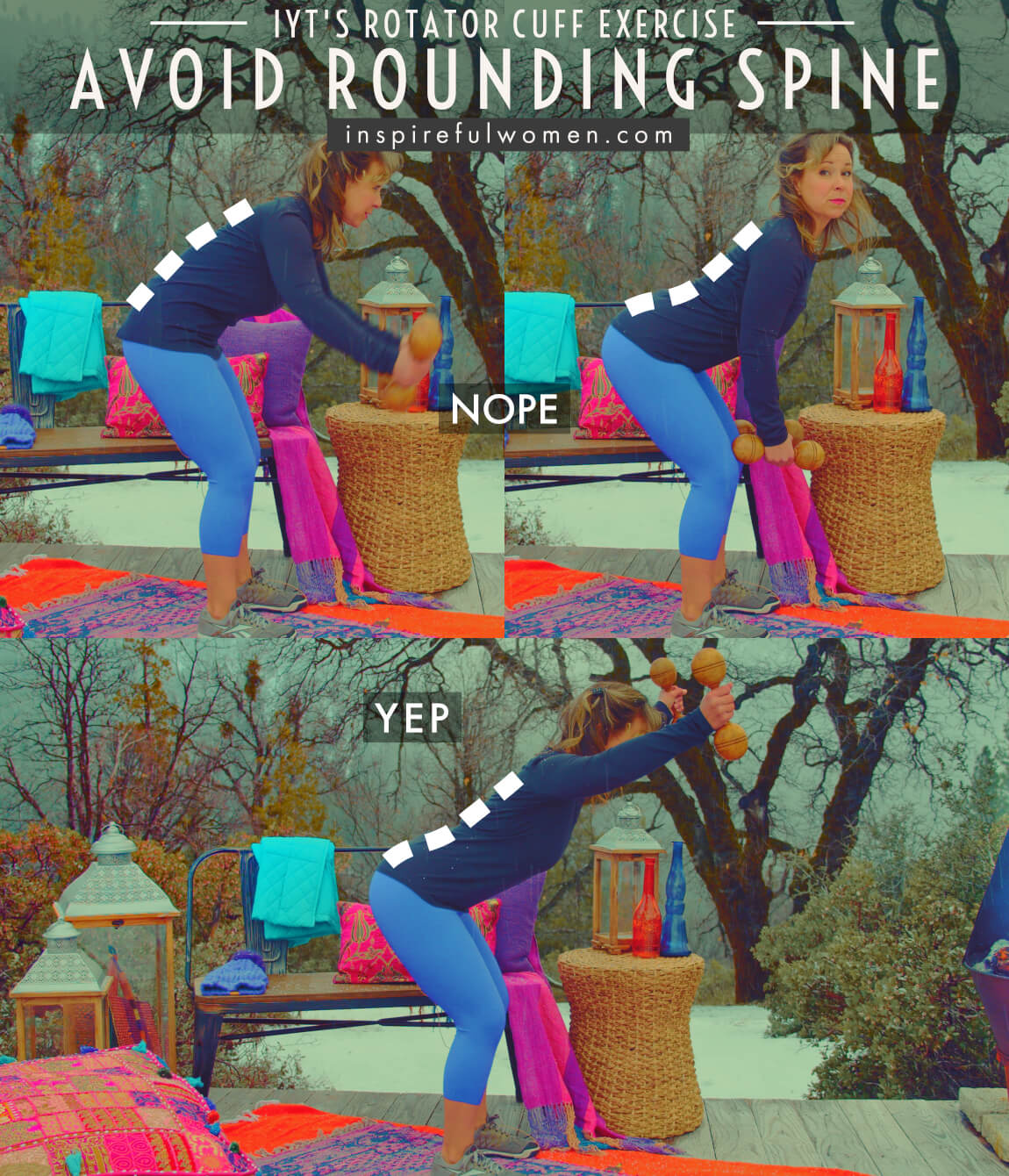
4. Avoid hunching shoulders
AVOID: Avoid hunching your shoulders up towards your ears.
WHY NOT?
- This means that you are activating the upper trap muscles.
- When the upper traps contract and shorten, they will pull the cervical vertebrae closer together.
- This exercise works the cervical stabilizers in a healthy neck position.
WHAT TO DO:
- Keep the neck lengthened.
- Keep the space between the ear and the shoulder during the entire rep to avoid tendon irritation and decrease the activity of the upper traps.
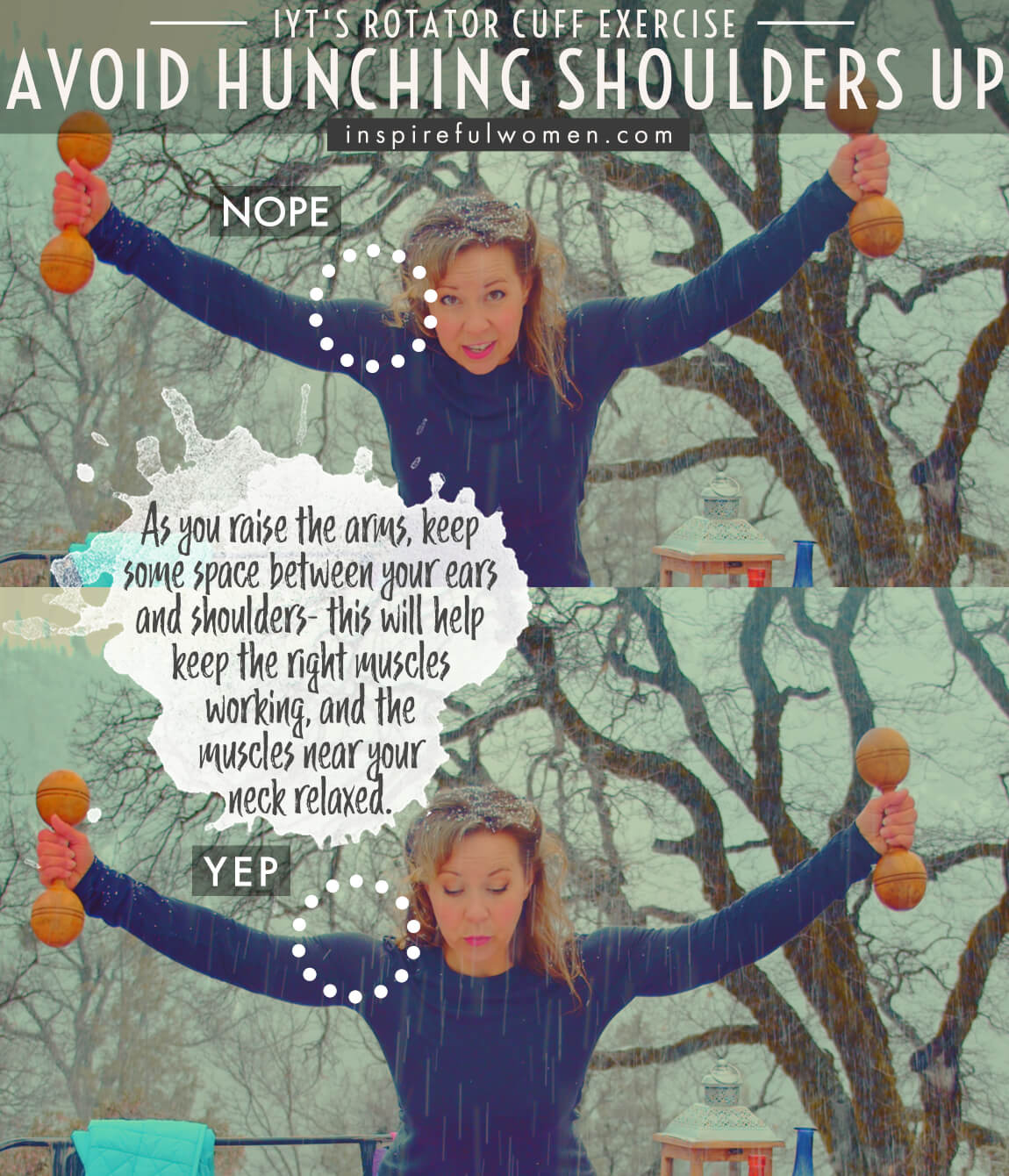
5. Avoid lifting torso
AVOID: Avoid lifting the torso up when the arms are lifted.
WHY NOT?
- This will not work the targeted muscles as much.
WHAT TO DO:
- Keep your torso still and isolate the movement to the shoulder blades and arms.
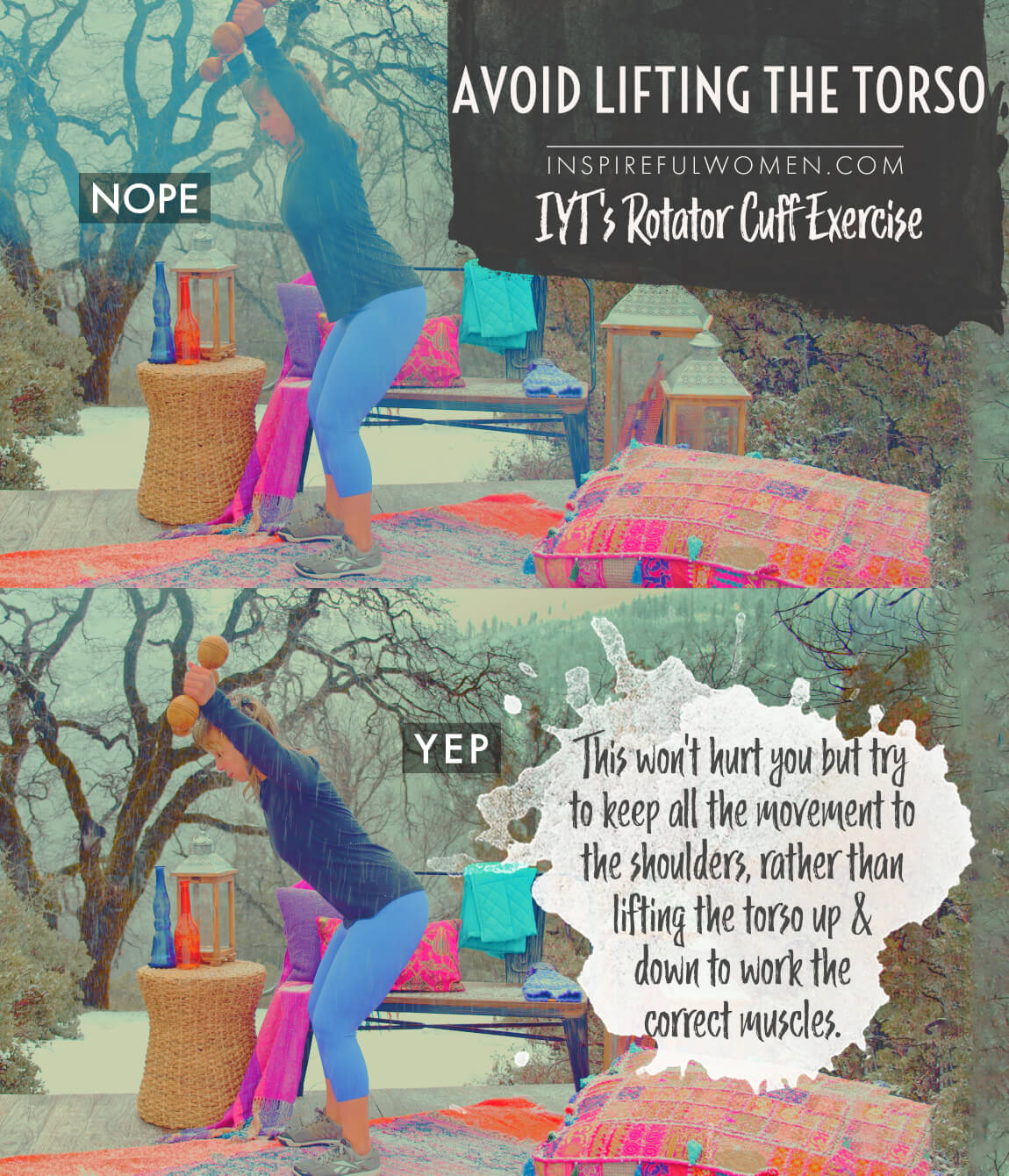
6. Avoid bending elbows
AVOID: Avoid bending your elbows.
WHY NOT?
- This will make work the muscles as much.
WHAT TO DO:
- Elongate your arms, reaching through your fingers (or fists if holding weights).
- Decrease your load if you struggle to keep your arms straight.
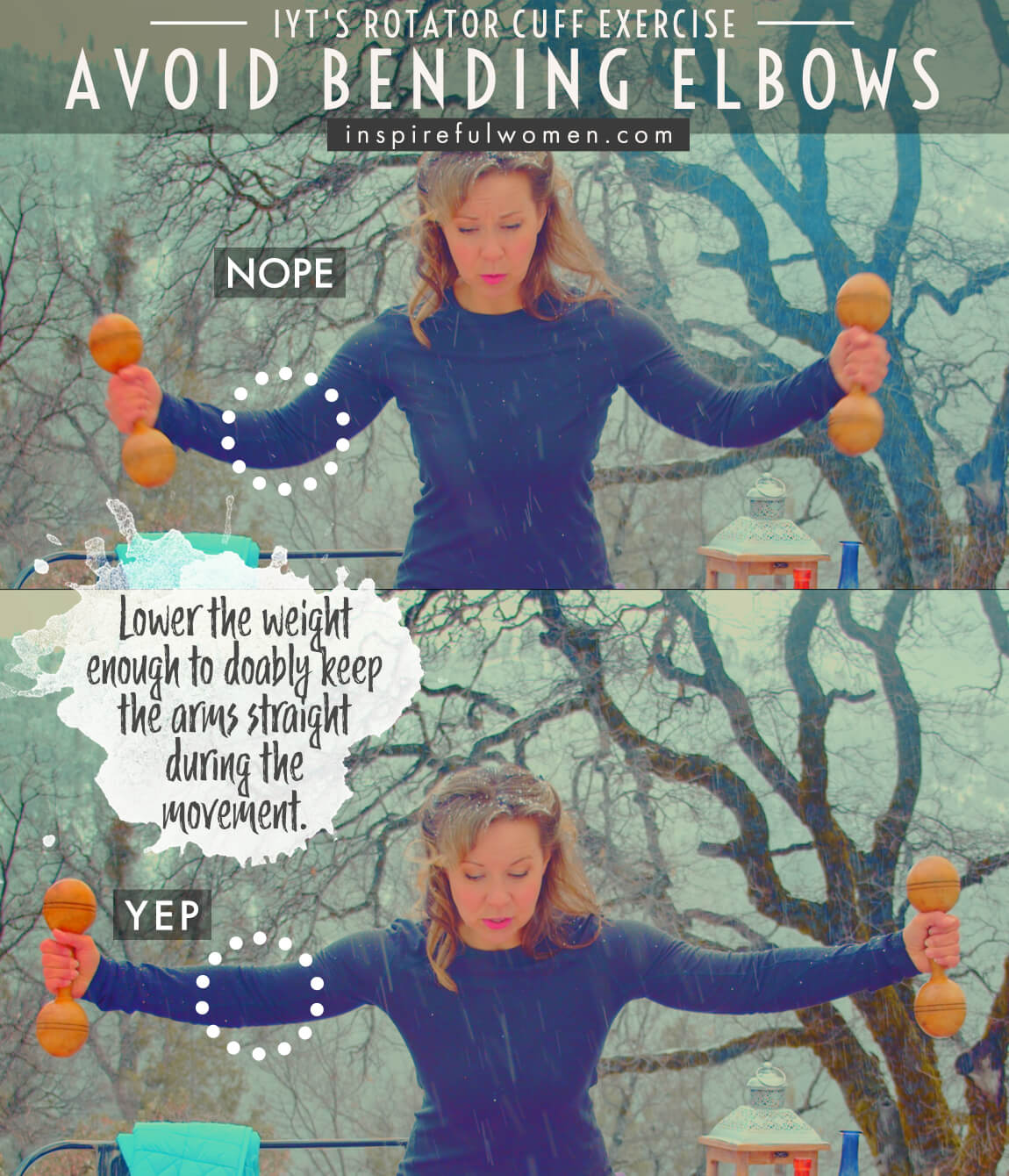
VARIATIONS
VARIATIONS
VARIATIONS OF IYT’s Rotator Cuff Shoulder Exercise
ALL REPS AT ONCE
all reps for each path first muscle fatigue
This variation is a nice option if you would prefer to keep tension on the muscle groups for a longer duration in order to fatigue that specific muscle group. Beginning with the T lift the arms straight out to the side to make the shape of a T, and complete all reps. Bring the arms back to the starting position and then lift them up diagonally to make the shape of a Y, complete all reps. Finish the set by bringing the arms back to the starting and then lifting them up overhead to form an I, completing all reps.
SCIENCY STUFF
ALLLL MUSCLES & WHEN
ALL MUSCLES WORKING & WHEN DURING IYT’s Rotator Cuff Shoulder Exercise
The transverse abdominis, rectus abdominis, obliques, erector spinae, and quadratus lumborum stabilize the spine in neutral. The gluteus maximus, hamstrings, and calf muscles will be active to hold you upright (from hips down) against the forward pull of the upper body (in the hinged-over position). Holding the cervical spine in neutral - longus colli, longus capitis, rectus capitis, and longus cervicis.
The thoracic portions of the erector spinae (iliocostalis, longissimus, and spinals) work to hold the upper back in alignment against gravity. The scapular retractor (rhomboids and mid traps), rear deltoid, lats, teres major, and triceps will list the arms out to the sides.
T: the mid trap and rhomboids, posterior delt, and teres major.
Y: the lower trapezius, lats, erector spinae, and deltoid, lateral deltoid
I: the lats, some upper pec, biceps, and anterior deltoid. The serratus anterior and upper and lower trapezius rotate the shoulder blade upward with the arm.
PIN IT FOR LATER!
